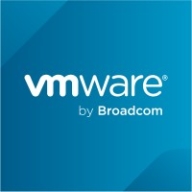

IBM Spectrum Computing and VMware Aria Automation are competing in the domain of cloud management and automation. While IBM Spectrum Computing is favored for pricing and support, VMware Aria Automation is distinguished by its extensive features, providing value aligning with its higher costs.
Features: IBM Spectrum Computing offers powerful scalability and workload management, optimizing resource allocation in varied settings. Additionally, it provides effective high-performance computing solutions and integration capabilities with OpenStack. VMware Aria Automation excels in automation capabilities, integrating seamlessly with various platforms, and its blueprint functionality is intuitive and enhances operational efficiency.
Room for Improvement: IBM Spectrum Computing's complexity in setup could be simplified, as could its integration with other vendor tools. The system might also benefit from more user-friendly interfaces. VMware Aria Automation can enhance its cost transparency and simplification of initial configuration processes. Improvements in support for non-VMware ecosystems would increase its competitiveness.
Ease of Deployment and Customer Service: VMware Aria Automation provides a streamlined deployment with comprehensive documentation and responsive customer service, making setup and maintenance efficient. IBM Spectrum Computing focuses on post-deployment support, ensuring system optimization. Although deployment is generally smooth, enhancing initial setup assistance could improve user experience.
Pricing and ROI: IBM Spectrum Computing is known for its cost-effectiveness and dependable ROI, attracting budget-conscious enterprises. VMware Aria Automation, with its superior features, justifies its higher initial investment through significant ROI, due to enhanced automation and integration capabilities.
| Product | Market Share (%) |
|---|---|
| VMware Aria Automation | 9.4% |
| IBM Spectrum Computing | 1.0% |
| Other | 89.6% |


| Company Size | Count |
|---|---|
| Small Business | 3 |
| Midsize Enterprise | 1 |
| Large Enterprise | 6 |
| Company Size | Count |
|---|---|
| Small Business | 32 |
| Midsize Enterprise | 24 |
| Large Enterprise | 130 |
IBM Spectrum Computing uses intelligent workload and policy-driven resource management to optimize resources across the data center, on premises and in the cloud. Now up to 150X faster and scalable to over 160,000 cores, IBM provides you with the latest advances in software-defined infrastructure to help you unleash the power of your distributed mission-critical high performance computing (HPC), analytics and big data applications as well as a new generation open source frameworks such as Hadoop and Spark.
VMware Aria Automation is a cloud management tool that allows companies to simplify their cloud experience through a modern automation platform. The solution is designed to deliver self-service clouds, multi-cloud automation with governance, and DevOps-based security and infrastructure management. It helps organizations improve IT agility, efficiency, and productivity through its various features.
VMware Aria Automation has multiple use cases that include the following:
VMware Aria Automation Features
VMware Aria Automation has various features that allow users to easily perform operations. Some of the solution's capacities include:
VMware Aria Automation Benefits
VMware Aria Automation offers its users various benefits. Some of the biggest advantages that the solution brings to companies that utilize it include:
Reviews from Real Users
Awais J., CTO/CEO at a tech services company, likes VMware Aria Automation because it saves a lot of time, provides more visibility, and has extensive automation capabilities.
An IT consultant at a government rates VMware Aria Automation highly because the product gives you flexibility to analyze and consume resources.
We monitor all Cloud Management reviews to prevent fraudulent reviews and keep review quality high. We do not post reviews by company employees or direct competitors. We validate each review for authenticity via cross-reference with LinkedIn, and personal follow-up with the reviewer when necessary.